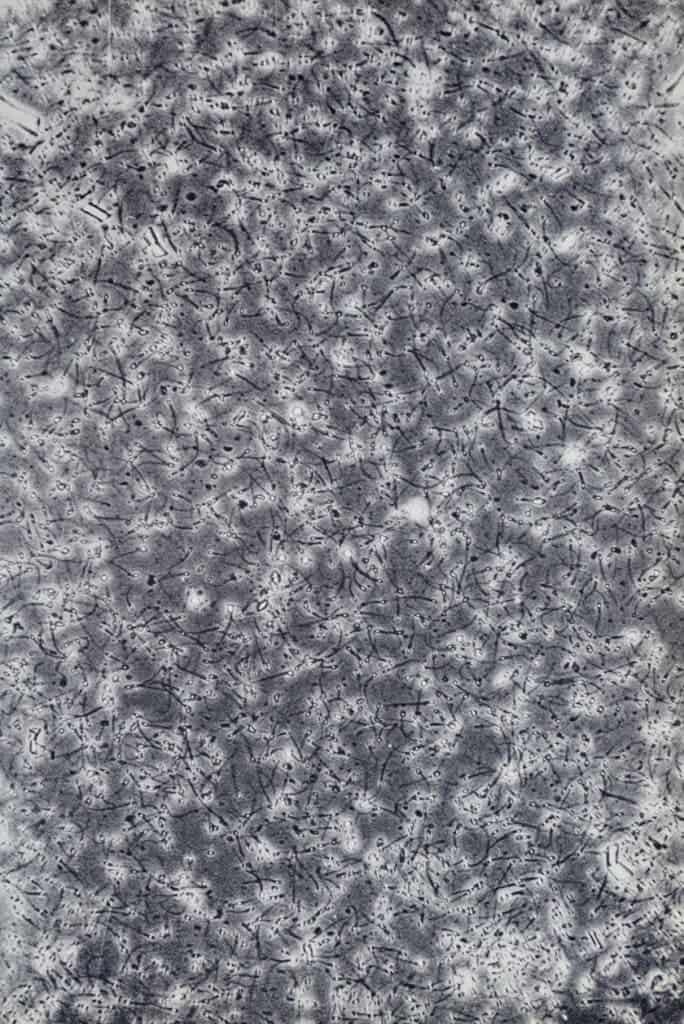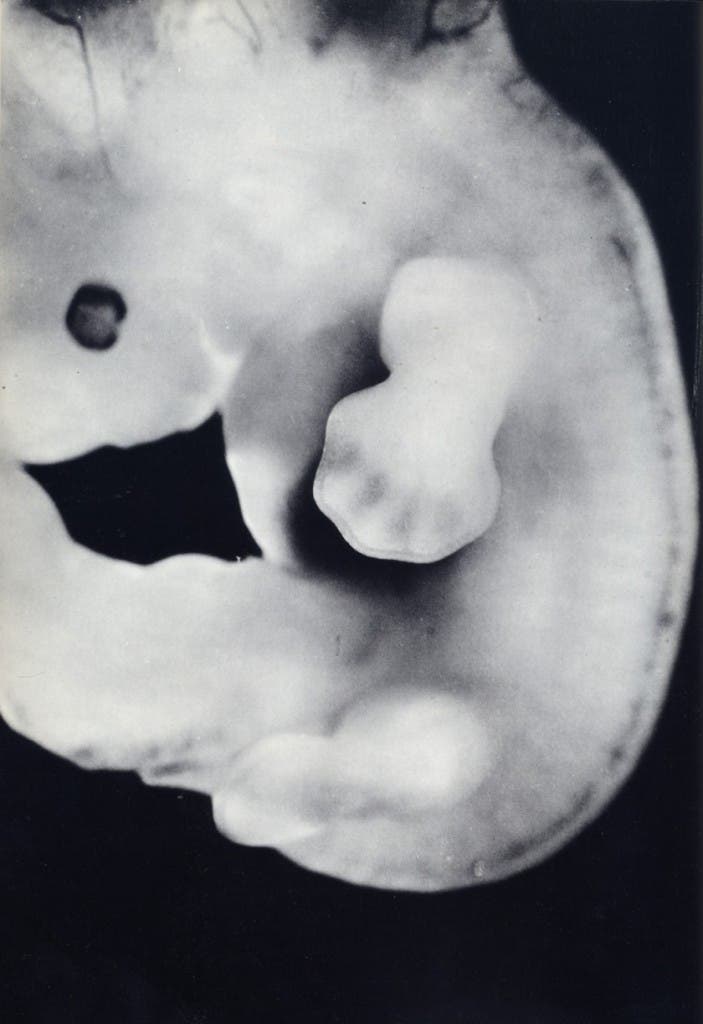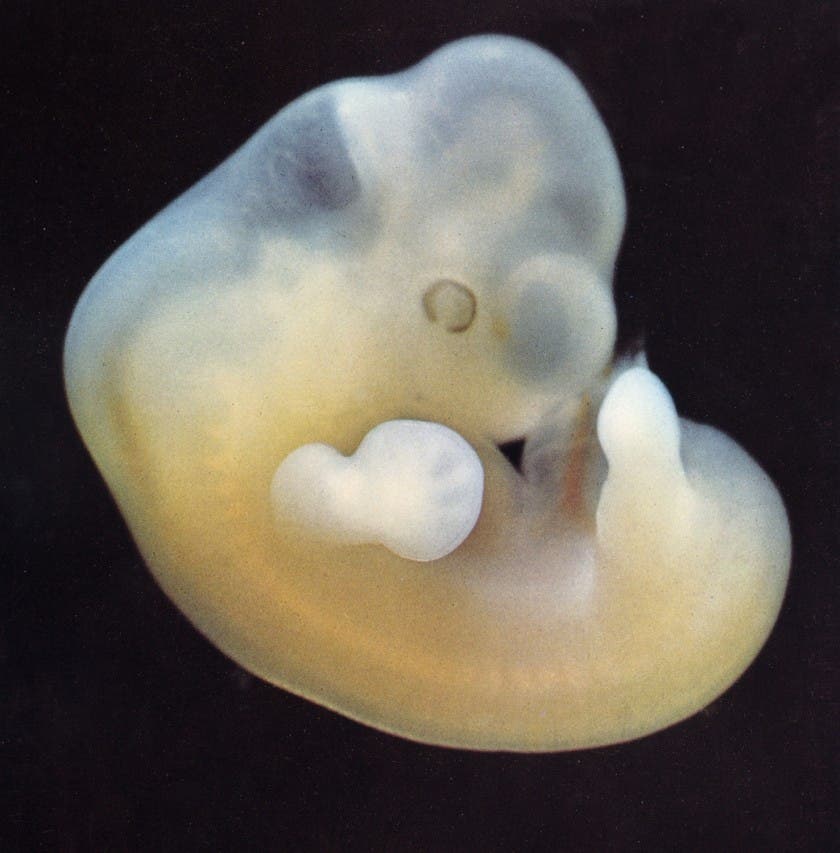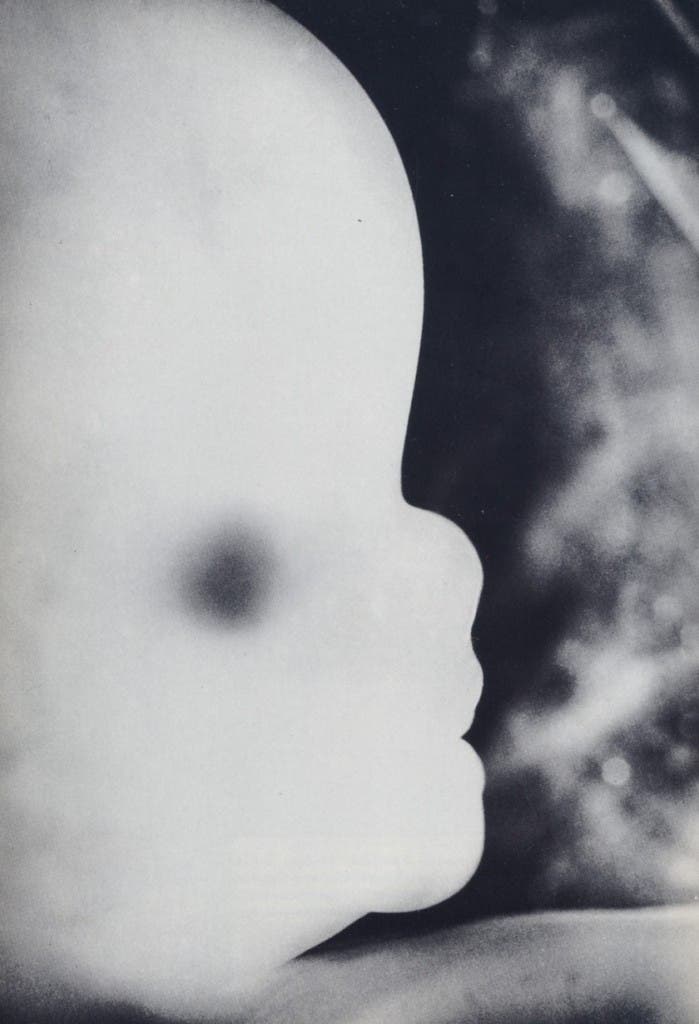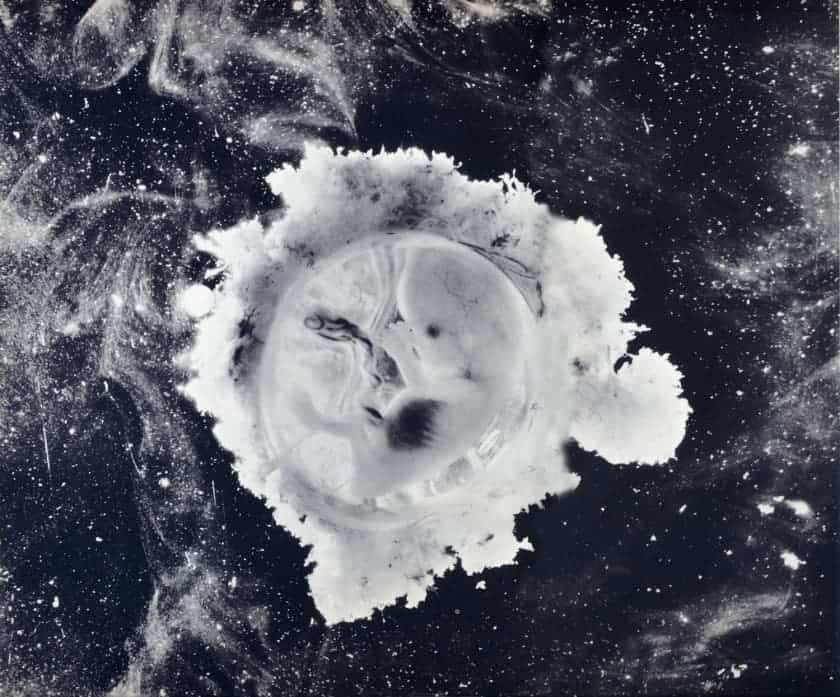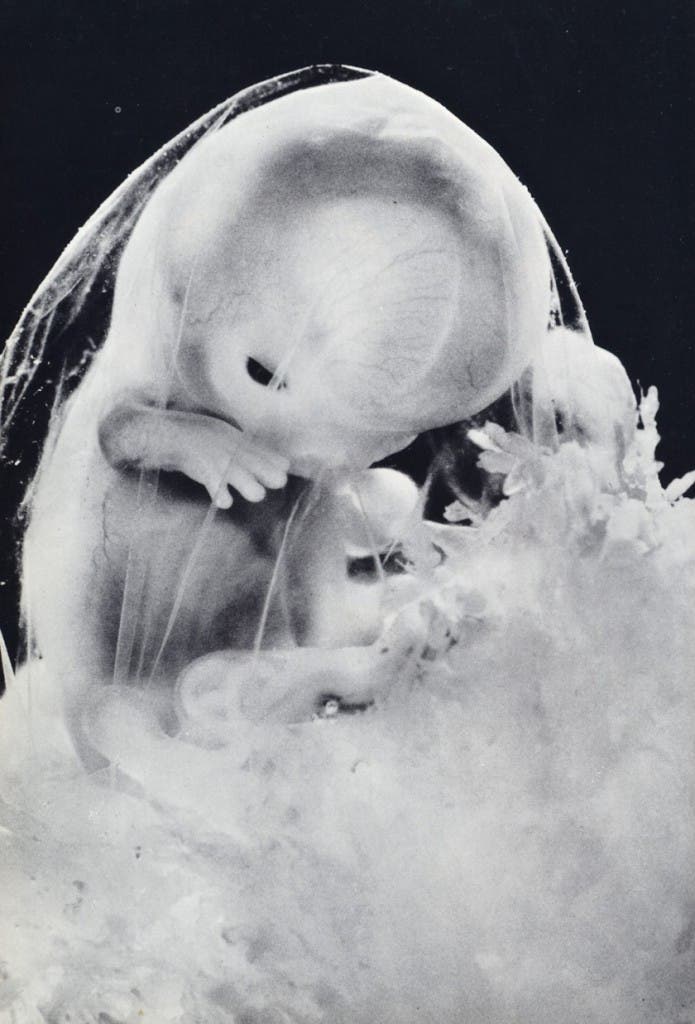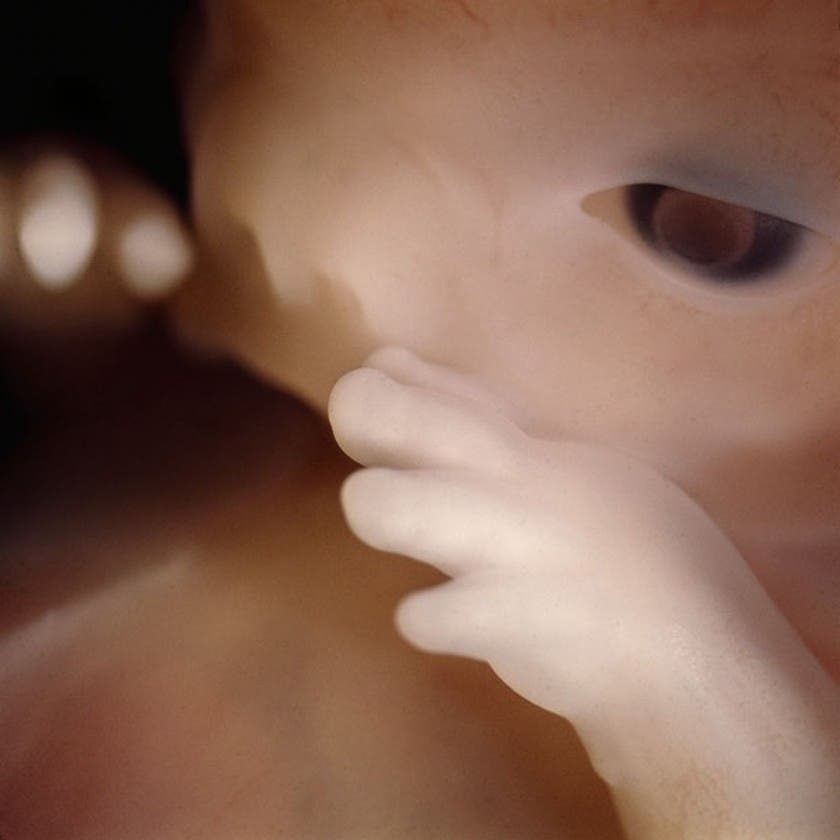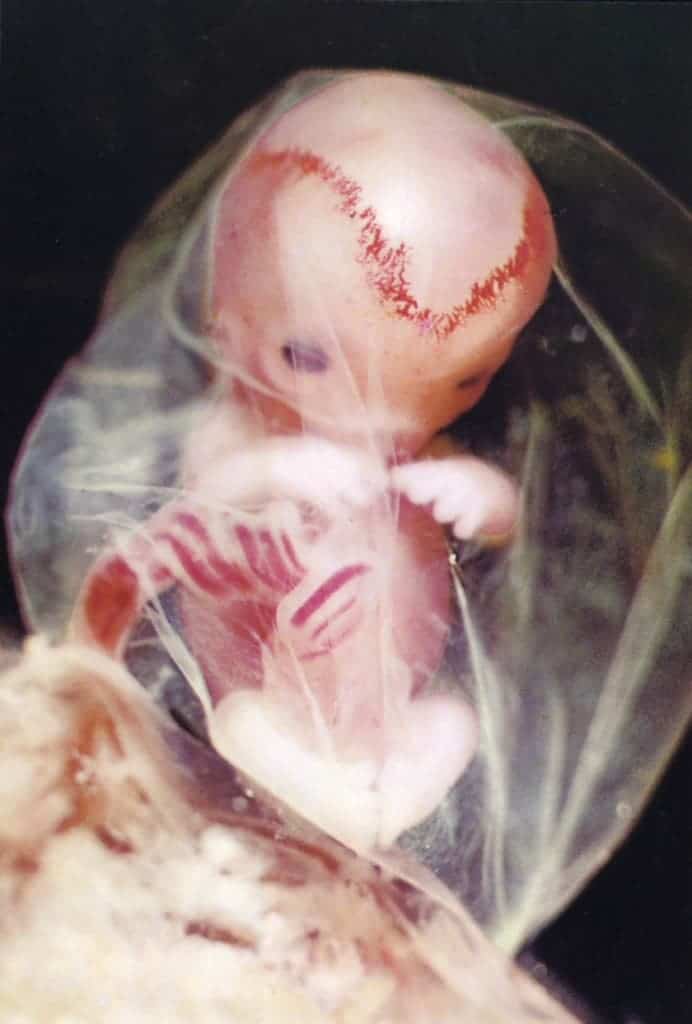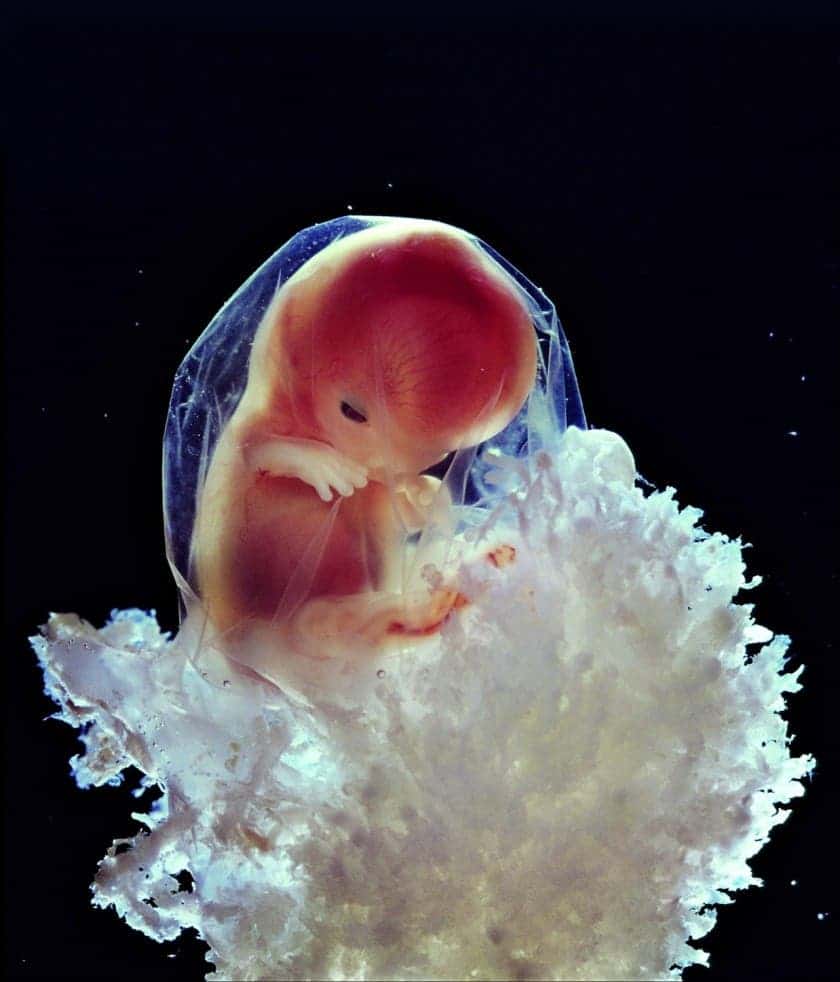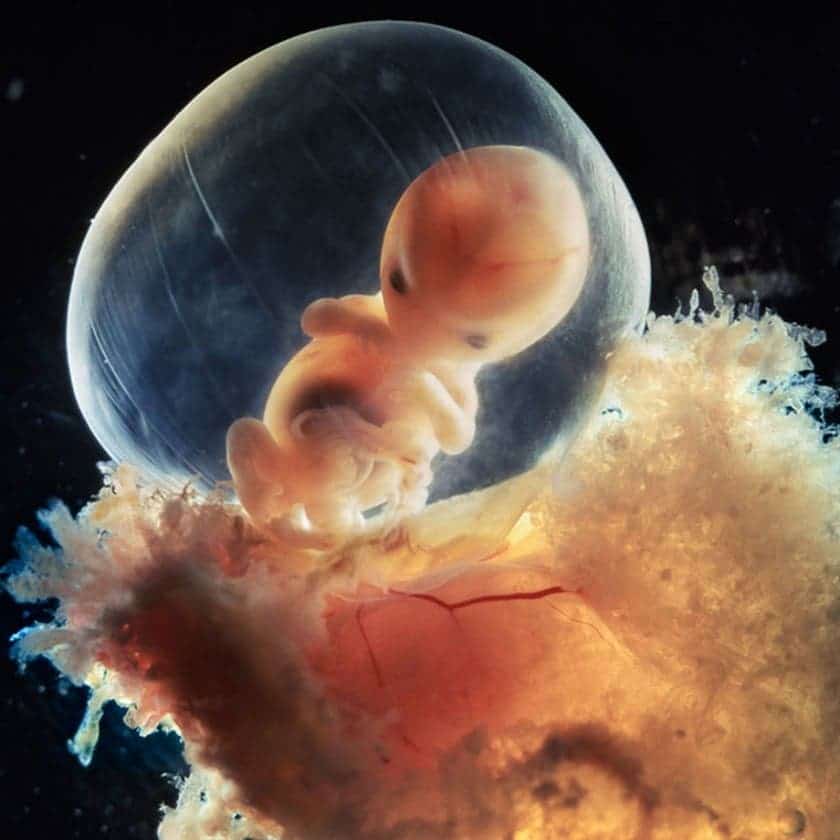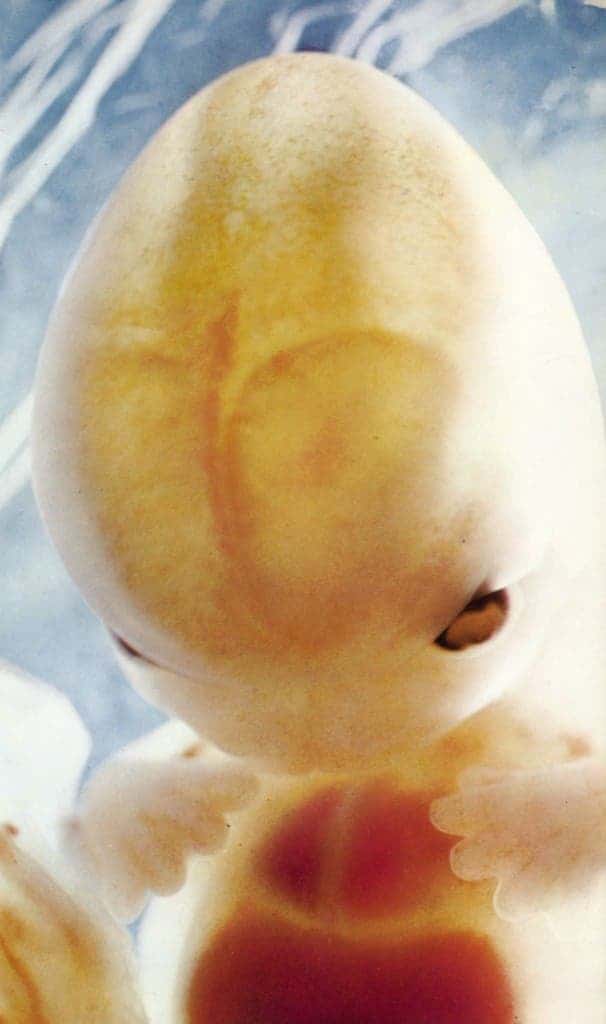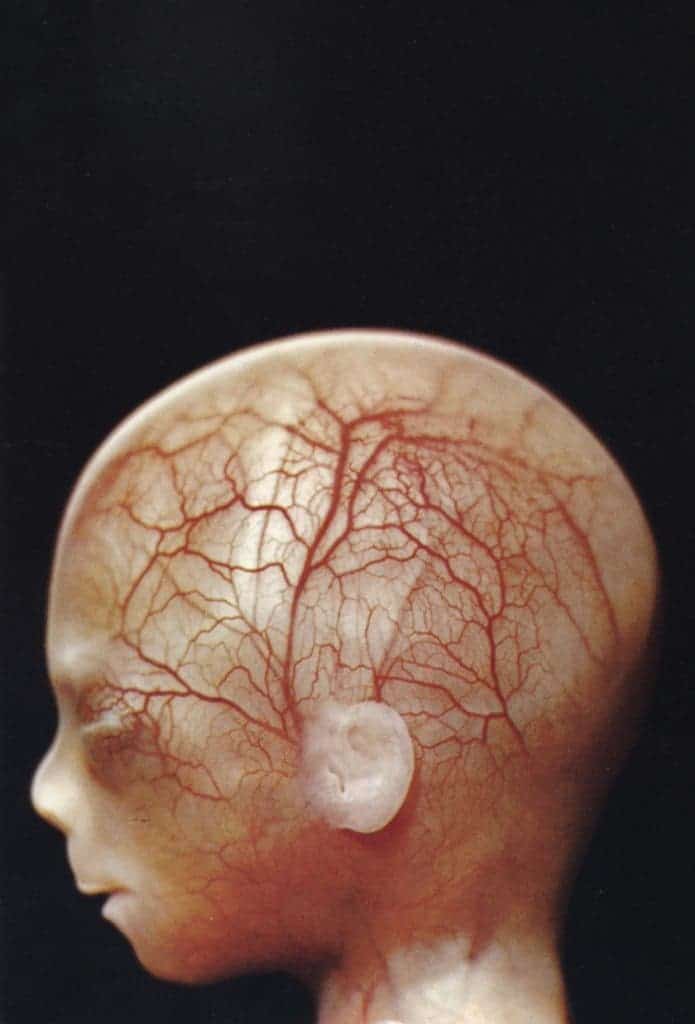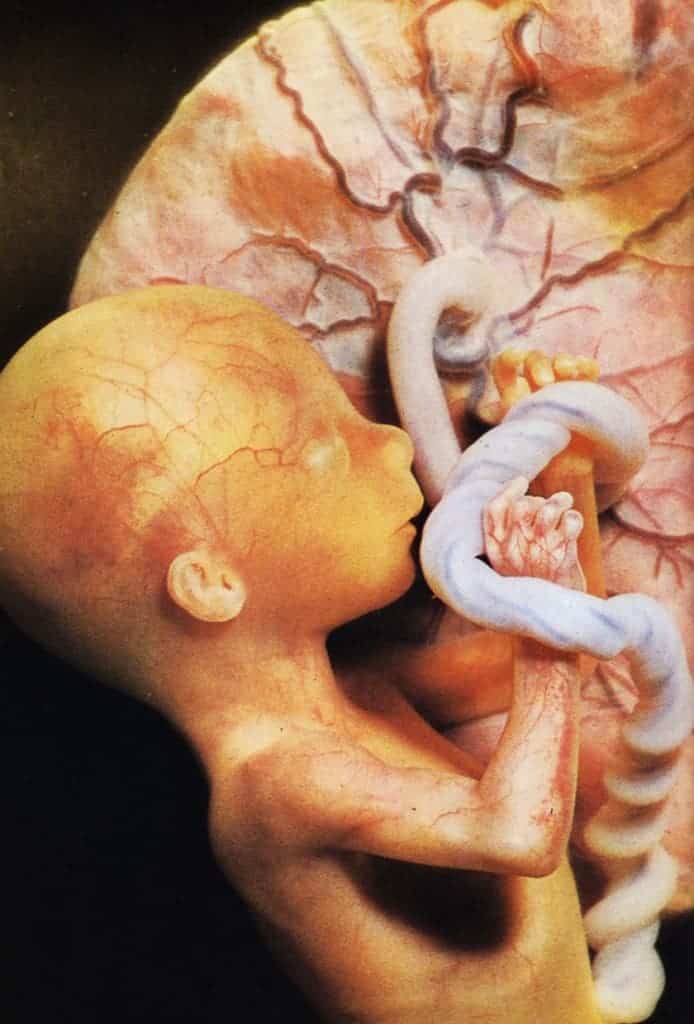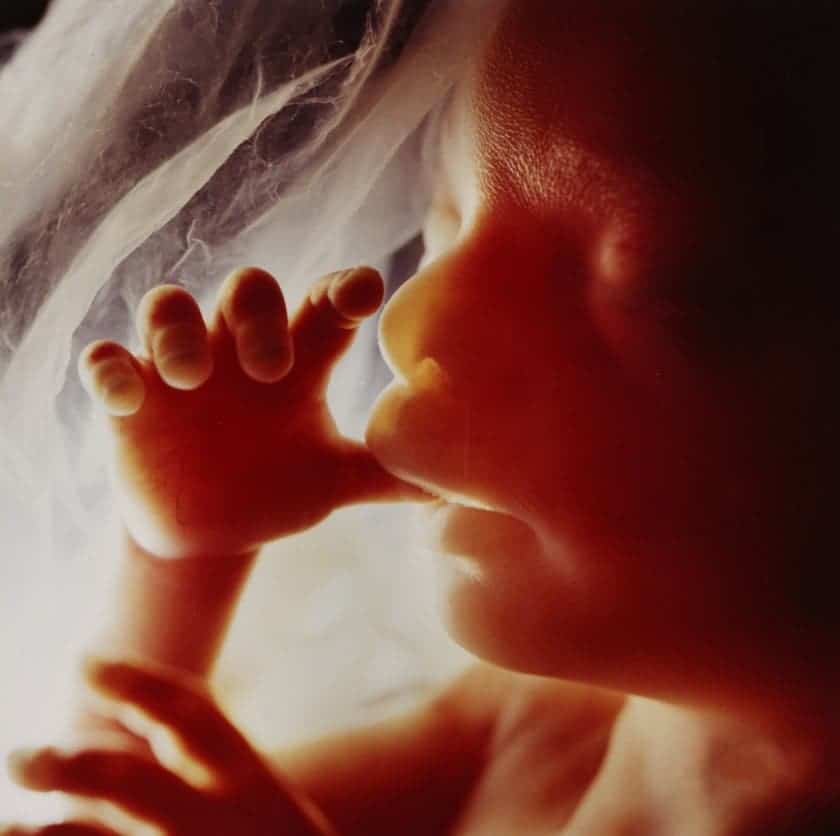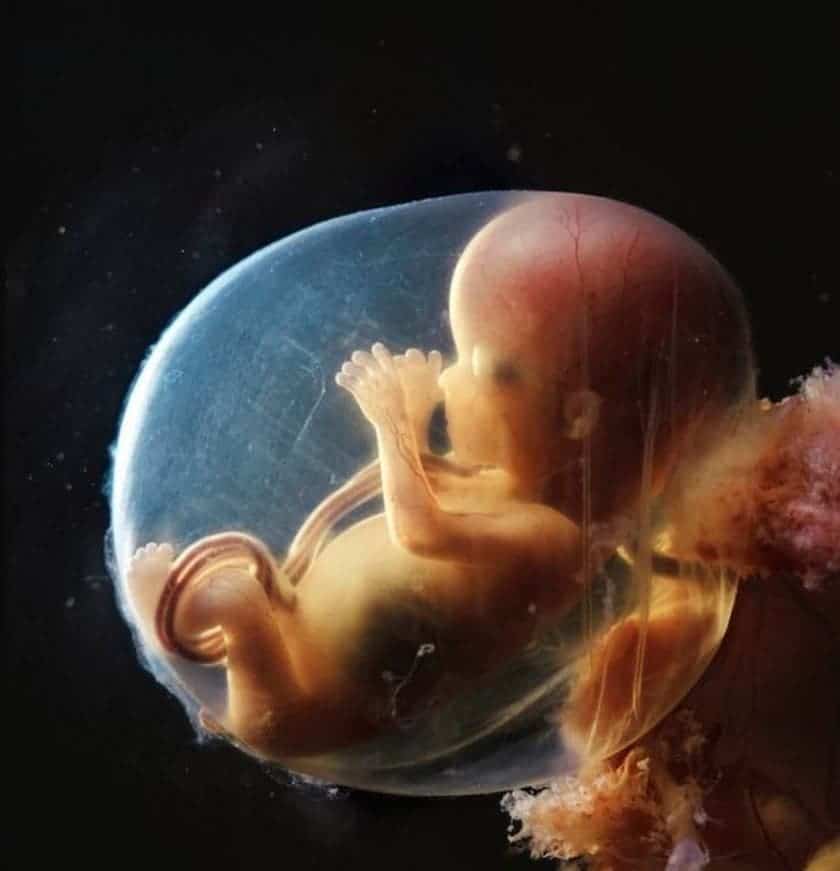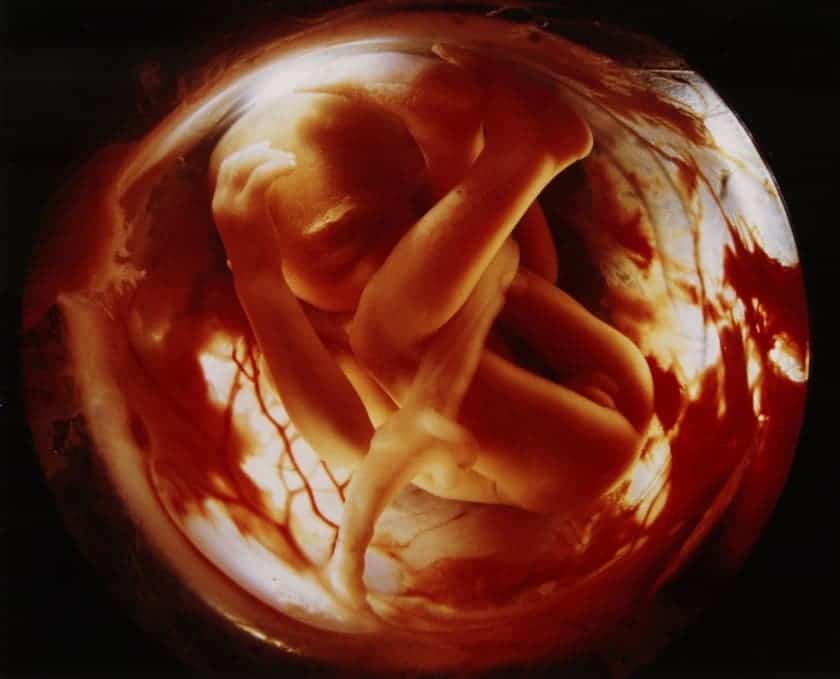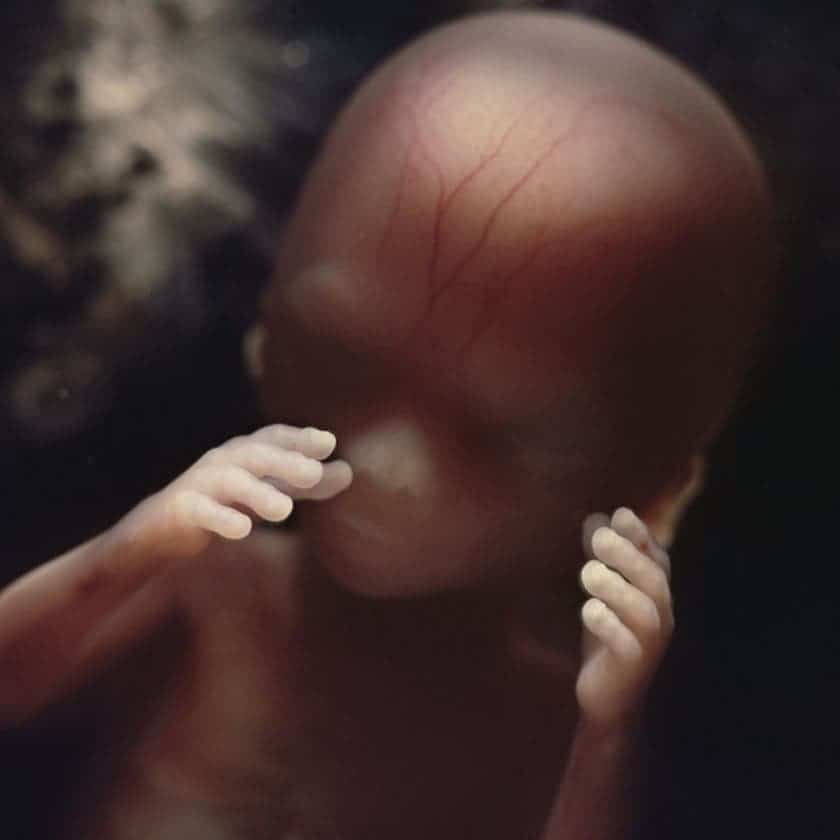In 1965, Swedish photojournalist Lennart Nilsson published what was to become one of the most successful photographic book of all time – A Child is Born. From the first ovary fecundation to the last stage of fetal development, the book documents the birth of a new human being in beautiful detail. With millions of copies sold, the book, now in its fourth edition, was also included aboard the NASA probes Voyager 1 and Voyager 2 – the first man made objects set to leave our solar system.
These were not the first embryo photographs in the press or even the first to show a developmental series. But it was Nilsson’s images that became twentieth-century icons. In contrast to the blurry black-and-white ultrasound scans, they shared in the explosion of colour in print and on screen. You might be asking yourself in the world did Nilsson manage to put a camera in the womb – the sad truth is Nilsson actually photographed abortus material obtained from women who terminated their pregnancies under the liberal Swedish law. Working with dead embryos allowed Nilsson to experiment with lighting, background and positions, such as placing the thumb into the fetus’ mouth. Ironically or not, pro-life activists of the 1960s and 1970s appropriated these images and used them in their campaigns.
[NOW WATCH] Fetal development from first cellular division to final stage [PHOTO GALLERY]
A Child is Born was separated into two parts: one series of photographs and accompanying text depict the development of the fetus from conception through to birth; the other shows a woman and her partner as her pregnancy progresses. Below you can see some of the photos from the first part. Mommies, daddies and people of all categories, childless or otherwise, will rejoice.
